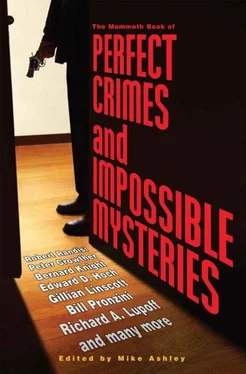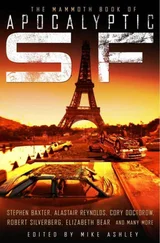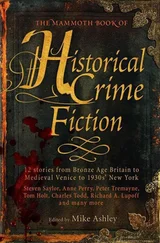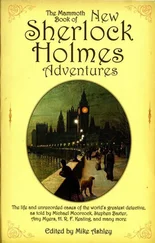“Pencil!” Toft’s voice came suddenly, alight with eagerness. “That’s it, Doctor… I wonder why I felt?… But I remember reading about it now.”
“What?” both Grimes and I demanded in one voice, but his lank limbs were carrying him headlong into the house, and he was calling to the sergeant for the pan of sitting-room sweepings.
He was in the sitting-room when they were brought. Toft picked from the mess the little cylinder of rubber that had dropped out of the cap of the pencil.
“Clever,” he muttered. “Devilish clever… Dropping that pencil, too…”
“What’s the pencil got to do with it?” Grimes frowned.
“ Nothing ,” Toft grinned, “but you’d never suspect that, would you? This bit of rubber looks as if it belonged to that pencil, doesn’t it? Just an ordinary eraser off the top of a pencil. But look-” Toft broke the pistol, exposing the breech hole, and into that he shoved the rubber cylinder. “It fits the pistol as perfectly as any lead slug, you see. Doctor, will you put that big book on top of that arm-chair. Good, now put a sheet of clean notepaper against it… and stand clear. I’m not such a good shot as Gerald Park.”
But he was good enough. He walked to the door, just where Gerald had stood, though instead of shooting from his pocket he took aim in the orthodox way, and fired.
Again the pistol made only a slight sound; a much sharper rap came from the paper where the rubber pellet struck. It struck with such force, in fact, that it bounded right across the room, and only Toft’s sharp eyes followed it to a corner under the book-case some twelve feet away.
“Your eyes show you the first advantage of such a bullet,” Paul Toft said. “Being rubber – having, in fact, a pneumatic tip – it bounces away with great violence from whatever it strikes. Bounces, you might say, right out of range of the victim, so that there is little chance of its being connected with him… and being innocent rubber, anyhow, it is likely to be over-looked. Only it’s not innocent rubber…”
He walked across the room and lifted up the sheet of notepaper the bullet had struck. On that paper we saw a faint ring impression made by the head of the rubber, and in the centre of it a tiny puncture – just such a puncture as had pierced the skin of Stanley Park’s head. It was then that we realised that there must be a needle bedded in that rubber cylinder. Paul Toft proved it to us.
Rescuing the bullet from under the book-case, he held it delicately by one end, and, taking a pair of tweezers from his pocket, pressed the outer edges of the circular top down. As he did that, a tiny needle-point emerged from an almost imperceptible hole in the nose, a needle-point no more than an eighth of an inch long, but, if that point was poisoned – deadly.
“I read about this some time ago… but forgot it until Doctor Jaynes stirred my memory,” the dreamy fellow smiled. “They’ve been using this deadly weapon in several countries of Europe for safe and secret murder. You can see how horribly efficient it is. An assassin can shoot at his man anywhere, in the street, in a crowd, in a theatre. Nobody hears the report of the air-pistol, so nobody can trace the shooter. The victim falls dead, but nobody knows how he dies. There is only that tiny poison hole, hidden by the hair, no doubt, as in Stanley Park’s case. The bullet – that has already bounced off into the litter of the street… it automatically vanishes when it has done its work. Even if fired in a room it can be covered up, as Gerald Park so nearly covered it up, by dropping a pencil from which the rubber eraser is missing… so you would think the bullet merely part of that…”
“Almost fool proof,” Grimes nodded. “When the murdered man tumbled down without wound, without any hint of anybody attacking him, it’d naturally be taken for heart failure or a stroke, as we thought Stanley Park’s death was; and all the murderer has to do is to walk away… Just as Gerald Park nearly did – but won’t.”
But I am afraid Gerald Park did. When Grimes arrested him he was startled, but took it quietly. He simply couldn’t believe we had caught him until he heard the charge read over to him, and saw the pistol. Even then he went quietly to his cell – and committed suicide. He’d been searched, of course, very carefully, but the police had overlooked a further quality of that deadly little indiarubber bullet. It could be too easily hidden. He’d hidden another bullet in the turn-up of his trousers, we thought. But we could never be sure. He was found next morning with the rubber cylinder gripped tight in his fist. The point driven into his palm, so that the hydrocyanic compound on it had done its deadly work. Thus we never knew how he had come to plan his murder – even though Paul Toft had brought it home to him.
The Impossible Footprint by William Brittain
William Brittain (b. 1930), a retired high-school teacher, is one of those authors who has consistently produced clever crime stories for the magazines for the last forty years and yet has had none collected in book form. That in itself is a mystery. He has written a long-running series featuring Leonard Strang, also a high-school teacher, who unravels unusual problems and whose adventures are long overdue for book publication. I reprinted one of the Strang stories in my earlier volume of locked-room mysteries. The following story does not feature Mr Strang, but is another baffling mystery. Just how can someone who has lost his foot leave a footprint?
***
Matt Kehoe leaned his hunting rifle against one of the small pine trees that encircled his hiding place in the still woods and beat his mittened hands together to get some circulation stirring in his fingers. Even through the two sweaters and the thick parka he was wearing the icy cold crept up his spine and made him shiver uncontrollably. His snowshoes creaked loudly as he shifted his weight from one foot to the other.
“Mister Kehoe, will ye hold still, if ye please? Oi’m a guide, sor, not a worker of miracles. If ye expect a deer to pass this way so’s ye kin get a shot at it, ye’ve got to stop soundin’ like a boiler factory at full production.”
The whispered voice with its rich Irish brogue conjured up visions of the morning sun rising over the green fields of County Cork and the smoke of peat fires issuing from the chimneys of sod huts in Galway. Kehoe looked at his companion and shook his head in amazement.
For the man who had spoken, crouched down on his snowshoes in a position Kehoe would have sworn it was impossible to achieve, had the swarthy skin, high cheekbones and thin, hawklike nose of a full-blooded Indian. His blue denim jacket could provide little in the way of warmth, while his wide-brimmed hat was perforated with several bullet holes as well as a few larger openings which looked suspiciously as if they had been made by human teeth. Yet the cold didn’t seem to affect him at all. The look of repose on his face might have been graven from stone.
“Joshua, I’m going to freeze to death if we don’t start moving around,” Kehoe said through chattering teeth. “Wouldn’t it be better to go looking for deer instead of just waiting for them to come to us?”
Joshua Red Wing shook his head slowly and looked up at Kehoe with reproachful eyes. “Yesterday when I agreed to guide ye in yer huntin’,” he said, “I understood ye wuz one o’ them detective chaps like oi’ve read about in the penny-dreadful magazines. Oi thought ye’d be used to a bit uv hardship, what with runnin’ down alleys an’ climbin’ fire escapes like I see on the tellyvision. It’s a sad disappointment to discover yer as soft as the rest uv the hunters from the city. Next oi’ll be findin’ out ye can’t shoot worth a damn, neither.”
Читать дальше











